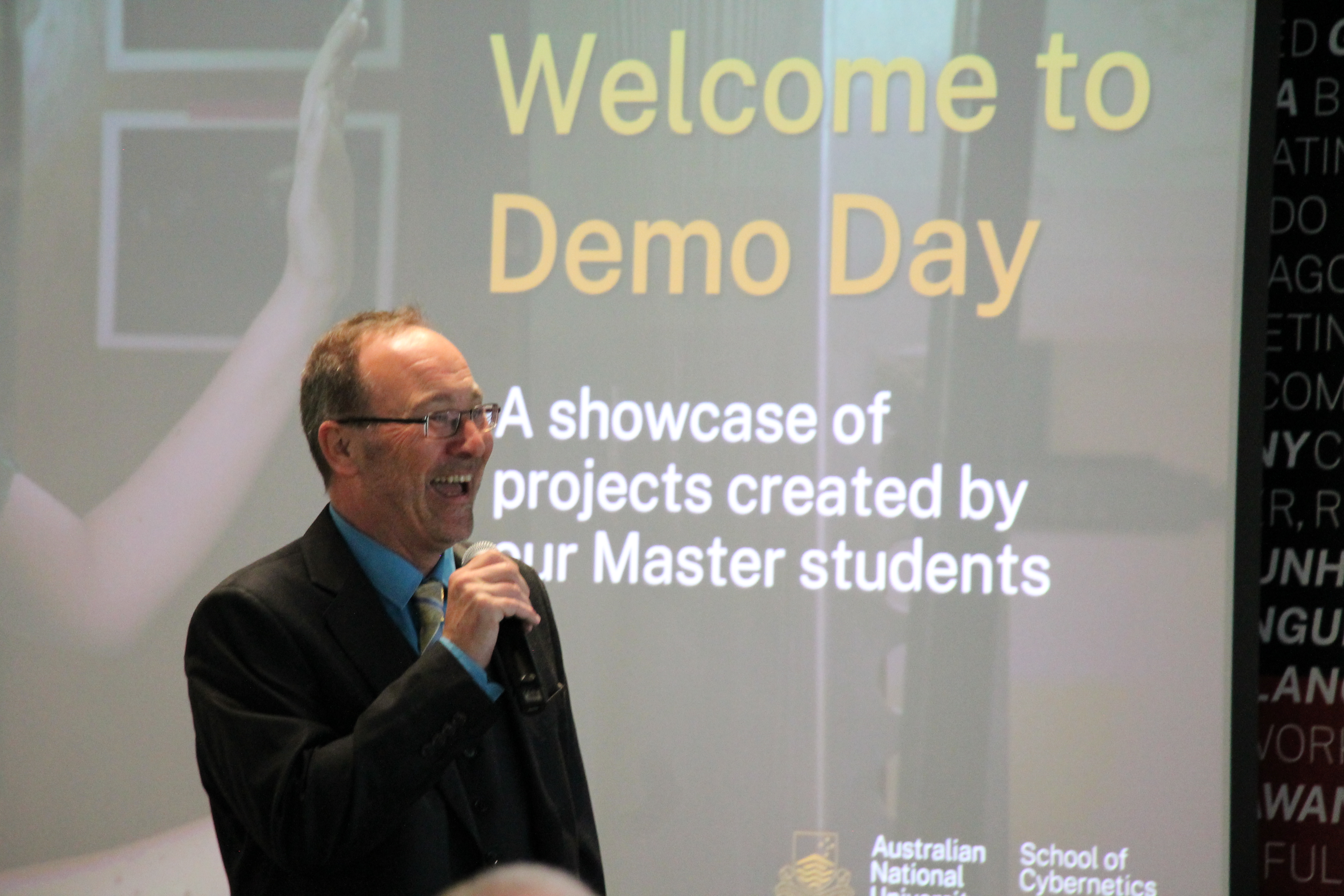Demo Day is one of our favourite days of the year. This milestone date is where our Master of Applied Cybernetics students showcase their brilliant projects to our community in an awe-inspiring display of knowledge and creativity.
What better way to finalise the end of their first semester at the School of Cybernetics?
We invite you to explore and enjoy the wealth of our students’ cyber-physical systems below.
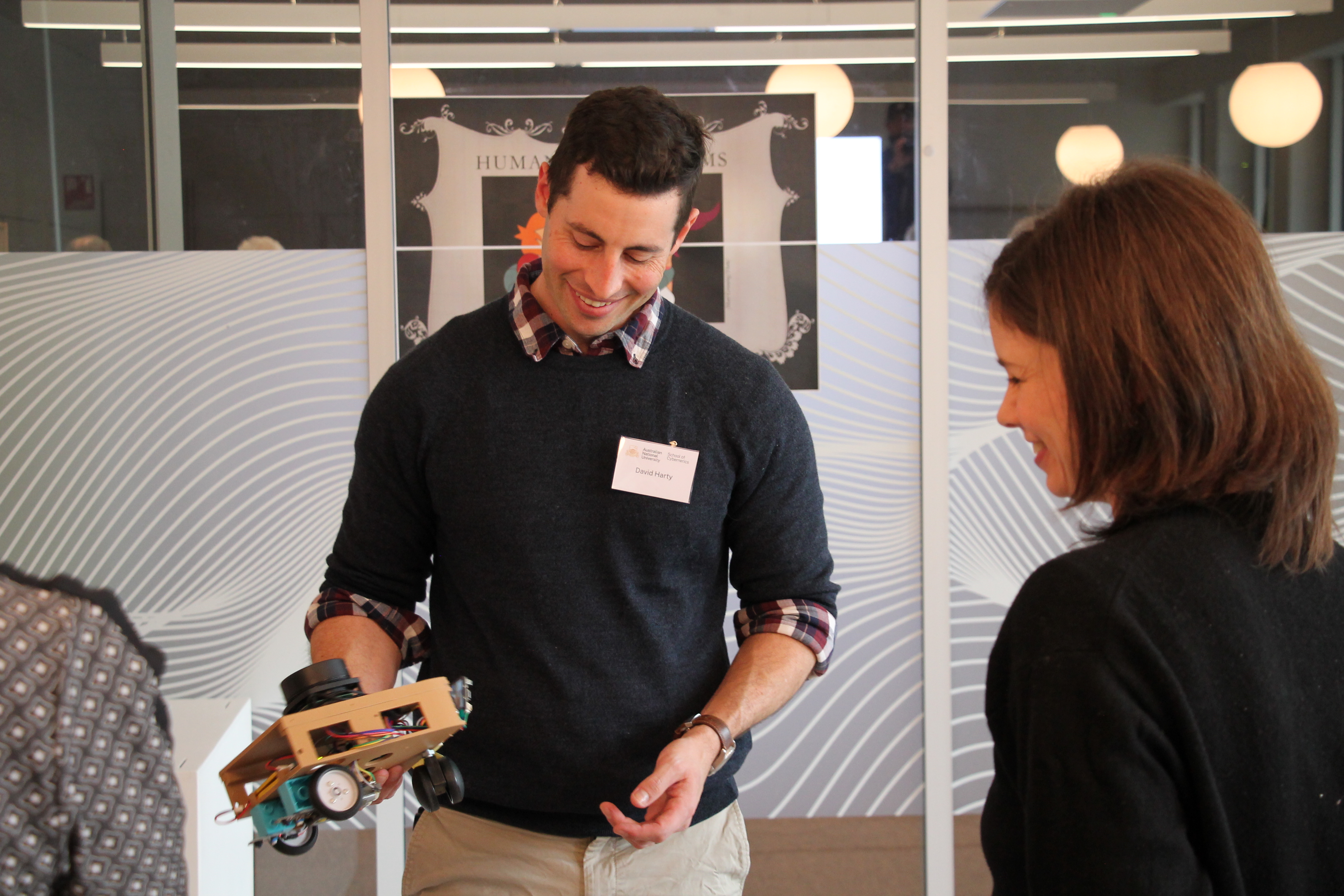
David’s project Human-Robot Teaming looks at the pathway from automation to autonomy to eventual agency. Through prototyping he has arrived at a robot that can move autonomously, detect hazards, and avoid collisions. David sees future iterations on this search task collaboration between robots and humans being used for Search and Rescue.

“I want us to think about when infrastructure comes to its end of life, how do we want to engage with it?.”
Exploring the past, present, and imagined futures Shi Pui Ng’s phone pavilion titled Hello? asks us to reimagine an existence for the classic, once ubiquitous, phone booth.

Bill McAlister has created an educational tool, The Cybernetic Stream Table, that allows people to experience the complexity of natural landscape, through mimicking a river system. “Unless you’re actively monitoring the river, it does what it wants.” Bill says, highlighting the non-linear cause and effects of complex systems.

Anthony Chung’s project Mosaic is about giving, touching, and spending time together. This cyber-physical system explores how people express different ideas in different languages and contexts, with users collaboratively building a “map of meaning”. Its ultimate aim is to make classrooms a more comfortable place for young students, allowing them to feel as though they can express themselves.

Ushabti925 is a cyber-physical system made by Dominika Janus from mostly free or 2nd hand components. This tool built against toxic productivity is a haven for ideas, acting as a memory aid to help with navigating the cemetery of our ideas.
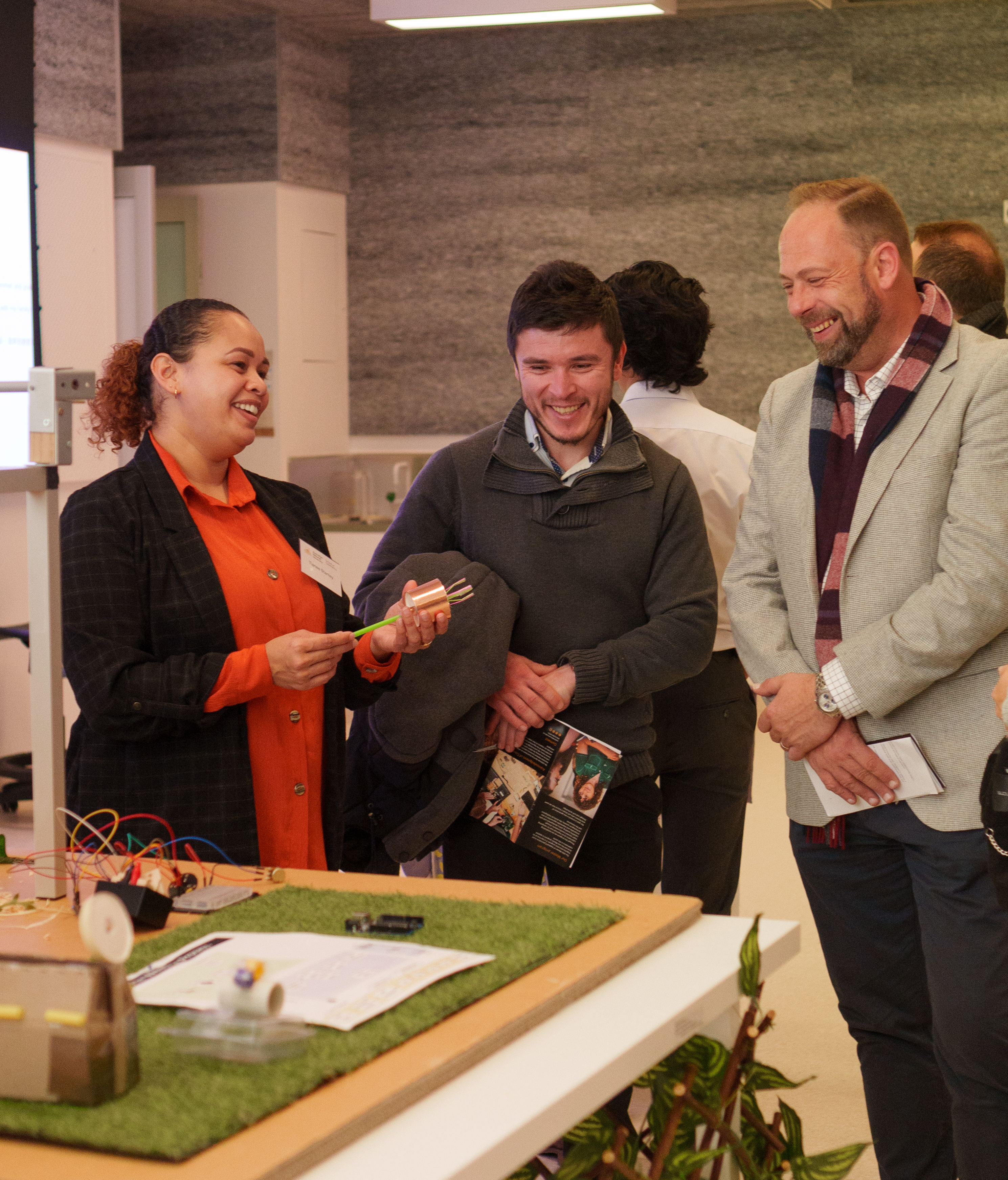
“This course is fantastic. It’s given me the freedom to just give things a go.”
Tianee’s project was inspired by the simple idea of helping her grandmother with gardening, though this turned into a huge cybernetic journey. Working on a project so far out of her comfort zone in a technical sense is something that the Master of Applied Cybernetics had unlocked for Tianee.
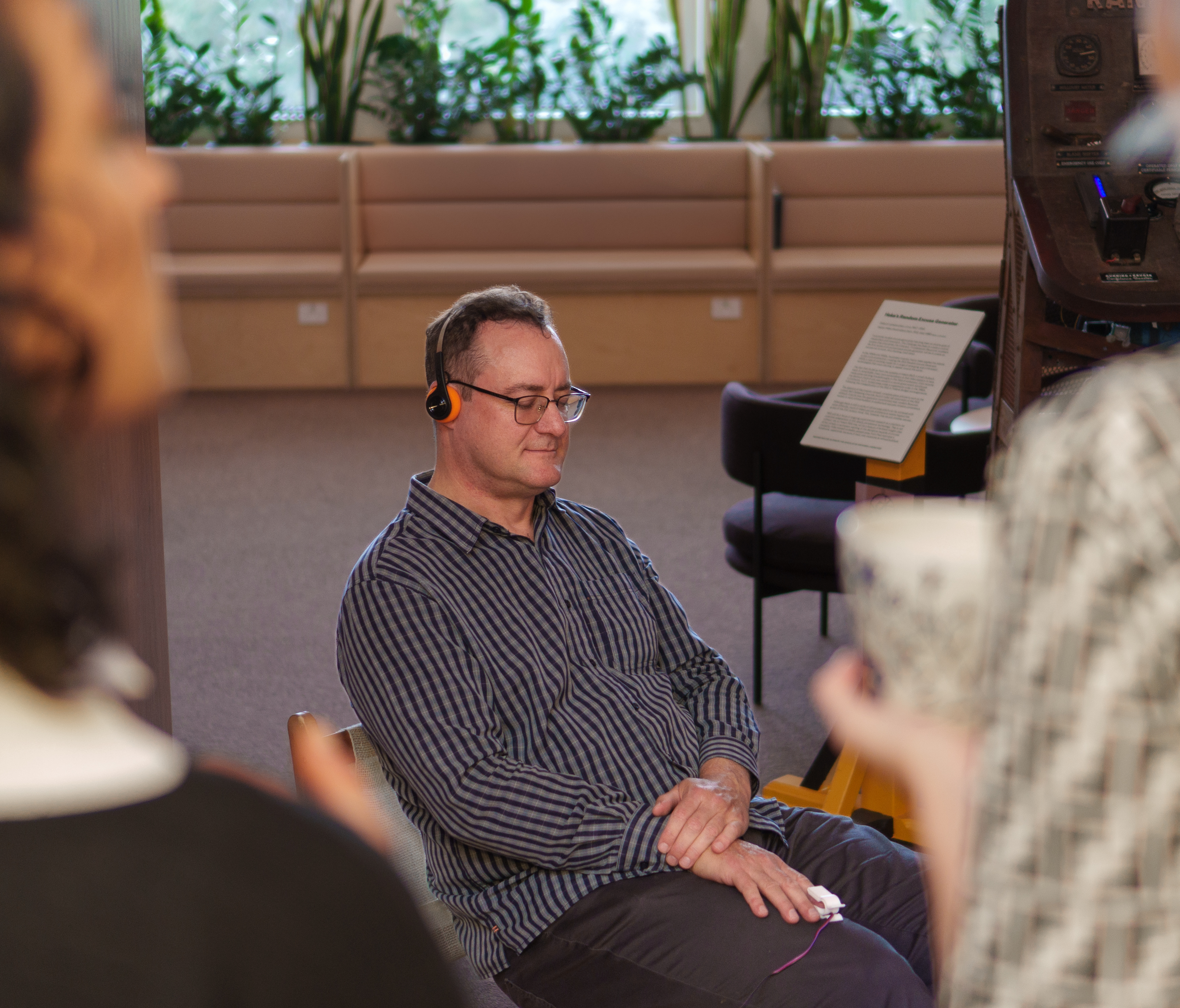
Sahar Farzanfar’s project Aura-mesh the Cybernetic Chair was built with the core purpose of stillness, and in line with the idea of keeping things in the cycle of life”. To encourage stillness Aura-mesh the Cybernetic Chair takes each sitter on a six-minute journey, using pulse measurements to determine the most appropriate mix of scent and sound to keep the sitter relaxed.

Jessica’s project Binderella aspires to help each Canberran household to be aware of our consumption. Binderella is a system that aims to make clearer what we’re handing over to the “black abyss” that are our bins.
Jessica imagines her own project finding a home in the future among many other supportive schemes leading to a safer, sustainable, and more responsible future, rather than a project in isolation.

Inviting participants to become agents of chaos, Tritian’s project TRU DATA “gives you a tangible experience with your data”, taking participant’s a step closer to our data than ever before. In giving data a monetary value, this project encourages participants to be conscious of the need for both data literacy and agency.

Amanda’s project Get Lost in the Music instructs us to “cover your ears with my ears”, “place your hands in my hands and walk with me”. Her project creates a way for AI to gain mobility without the need for its own legs or wheels.
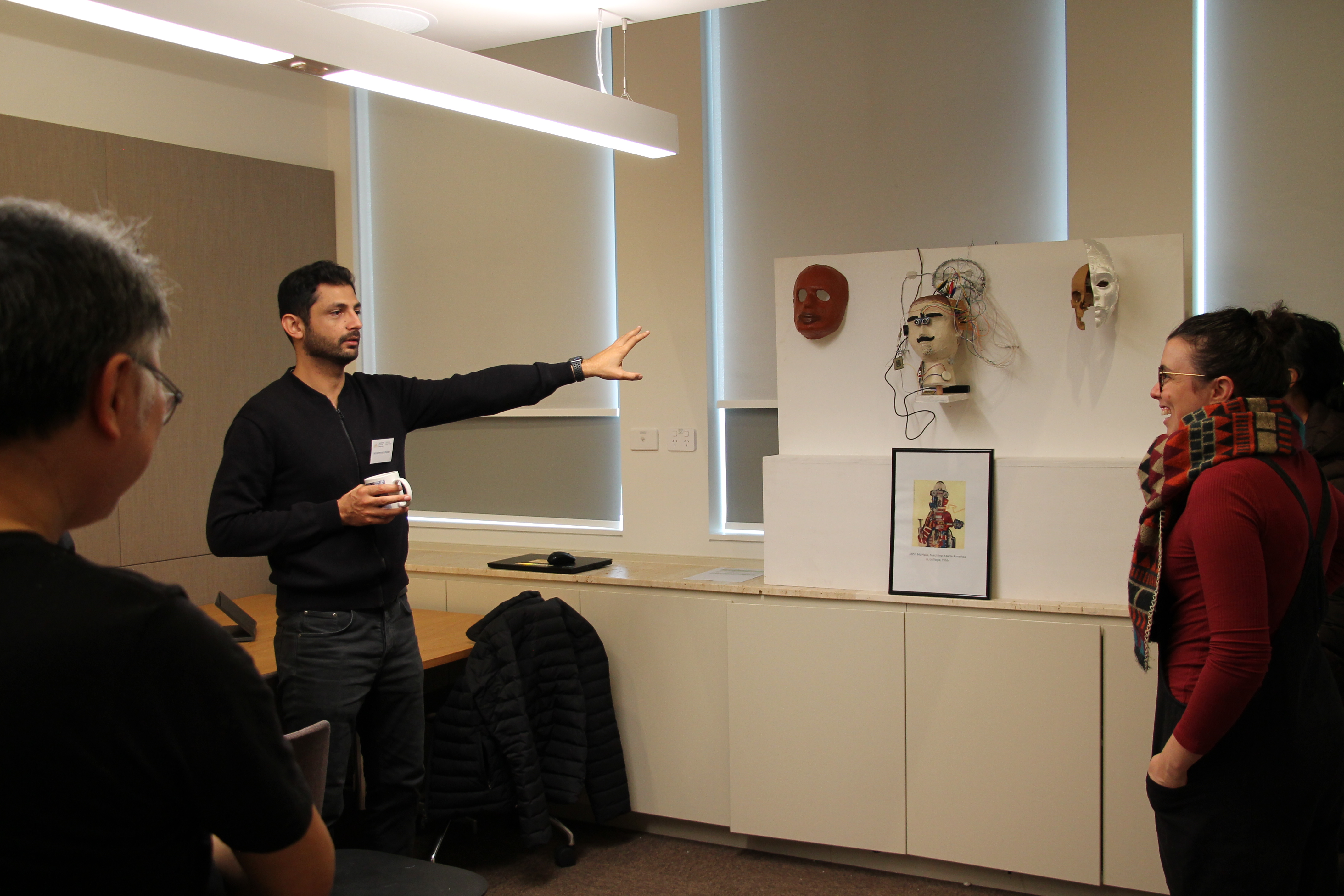
Muhammad’s project Do You See What I See? takes inspiration from John McHale’s work and is interested in exploring plurality and co-creation of meaning with viewers. Muhammad asks is the future more human or more cyborg?
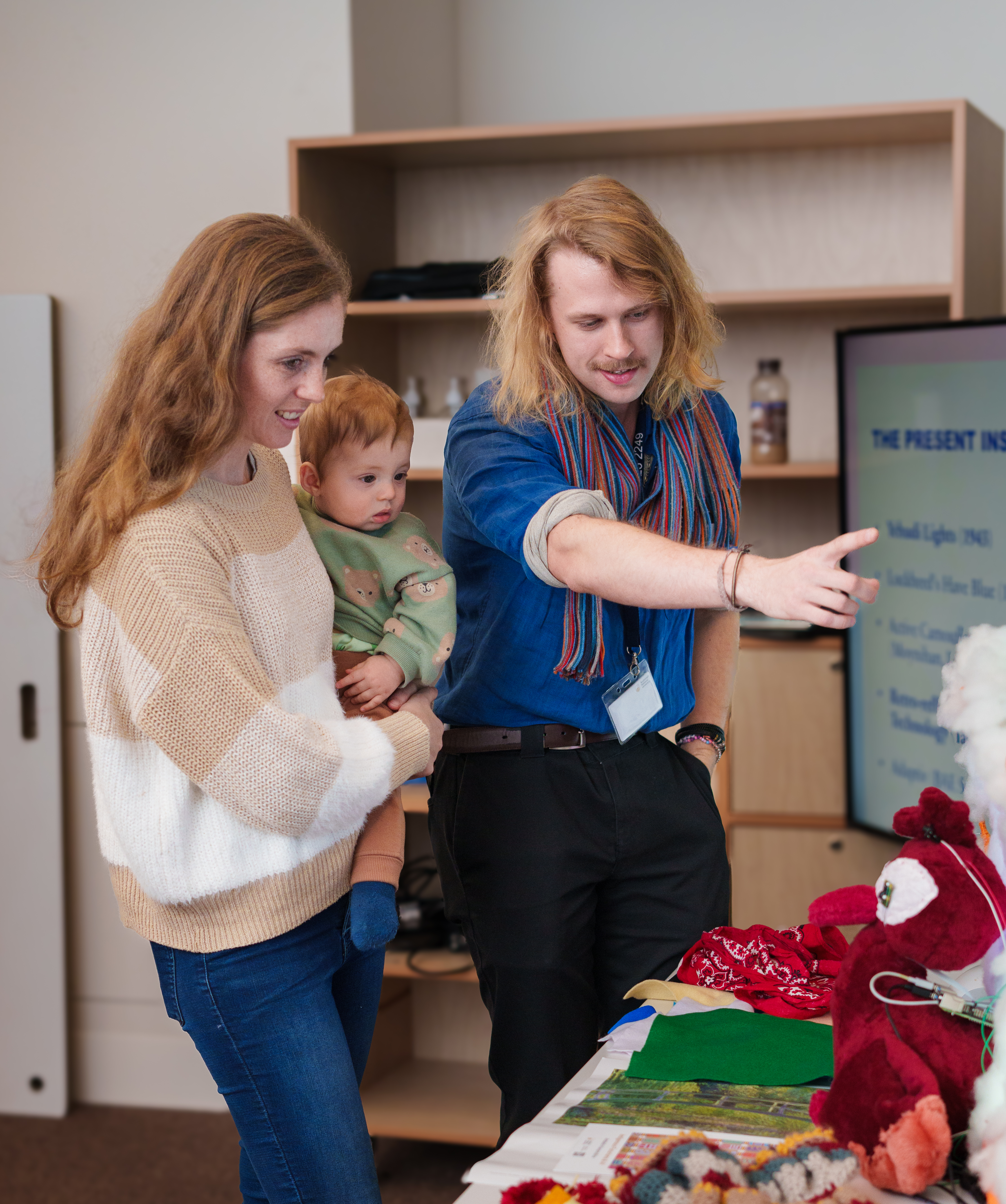
Izak Lindsay’s idea is to address the fast fashion industry in creating a dress/garment that changes colour and shifts in appearance based on its surroundings. This visual mimicry of his project Symbiosis gives the garment a “way to communicate through AI”
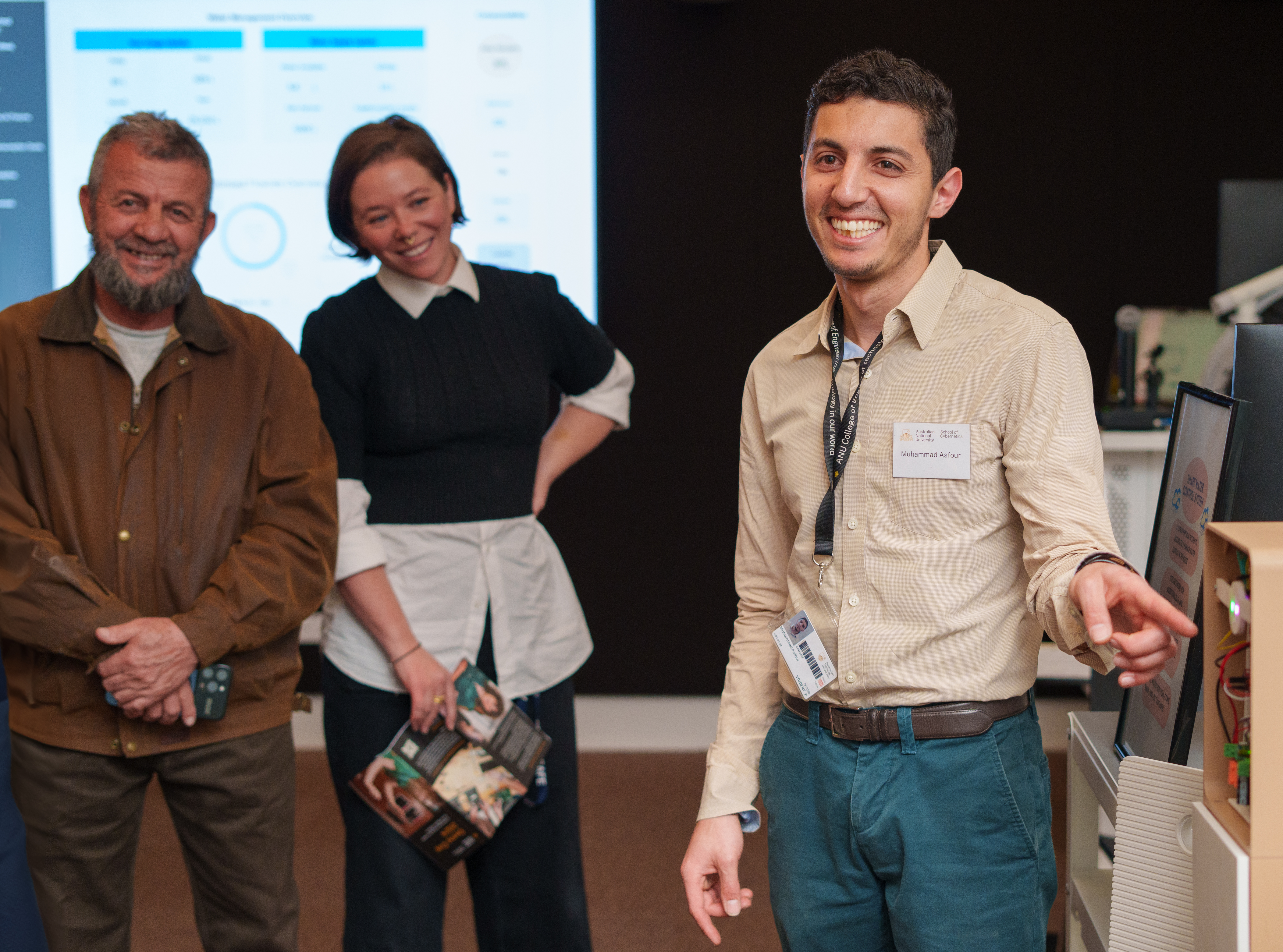
Muhammad Asfour’s work empowers us to adjust our habits when it comes to our water storage and usage. His project Water Control Centre allows people to both save money and be sustainable through droughts.

The School community was highly impressed by the innovative projects presented by our Master students at Demo Day 2024. The event highlighted the students’ remarkable achievements and the culmination of their hard work and creativity. As we look forward with anticipation to the next Demo Day, we take this moment to celebrate and acknowledge the exceptional accomplishments of our Master students
Want to join our next cohort of Master students and be a part of an upcoming Demo Day? Find out more about studying with us here.

